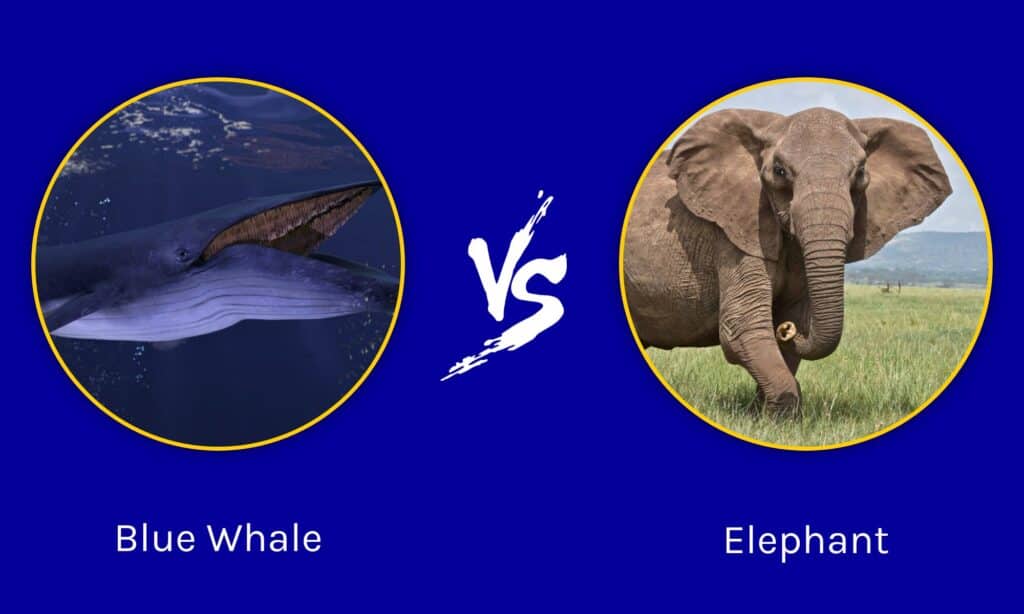Elephants and blue whales are two of the largest and most powerful creatures in the animal kingdom. While elephants can weigh up to 14,000 pounds and have thick gray skin, blue whales are the largest animals on Earth and can weigh up to 200,000 pounds. Elephants form tight-knit family groups and display a range of behaviors such as playful romping, mournful grieving, and aggressive trumpeting. Meanwhile, blue whales are solitary creatures that travel thousands of miles to feed on krill, using their massive lungs to store oxygen. Both creatures face threats from human activity and habitat loss, and it is important to protect them and their habitats for future generations.
The Battle of the Giants: Elephant vs. Blue Whale
Introduction
The animal kingdom is filled with creatures of immense size and power, but few can rival the sheer size and strength of the elephant and blue whale. These two giants of the animal world occupy very different realms, but both are formidable forces in their respective environments. This article will compare and contrast these two creatures, exploring their physical characteristics, behaviors, and habitats.
Physical Characteristics
The elephant is one of the largest land animals, with males weighing up to 14,000 pounds and standing over 10 feet tall at the shoulder. They have long trunks which they use to grasp objects and forage for food, as well as large, fan-like ears which help to regulate body temperature. Elephants have thick, gray skin that provides protection from predators and the sun.
In contrast, the blue whale is the largest animal on Earth, with adult males weighing up to 200,000 pounds and measuring up to 100 feet in length. They have sleek, streamlined bodies that allow them to glide effortlessly through the water, with long, powerful tails for propulsion. Blue whales have bluish-gray skin that is covered in white patches, as well as a distinctive dorsal fin and a ventral pleat that expands when they feed.
Behaviors
Elephants are highly social animals, forming tight-knit family groups known as herds. These herds are led by a matriarch, typically the oldest and most experienced female, who guides the group to food and water sources. Elephants are known for their remarkable memories and can recognize other elephants they have not seen for many years. They also display a range of behaviors, including playful romping, mournful grieving, and aggressive trumpeting to signal danger.
Blue whales are solitary creatures, typically only coming together during breeding season. They are known for their long-distance migrations, traveling thousands of miles to feed in colder waters during the summer months. Blue whales feed mostly on krill, tiny shrimp-like creatures which they swallow in huge gulps. They are capable of staying underwater for up to 30 minutes, using their massive lungs to store oxygen.
Habitat
Elephants are found throughout Africa and Asia, living in forests, savannas, and grasslands. They require large areas of land to roam in search of food and water, and are increasingly threatened by habitat loss due to human development. Elephants are also hunted for their ivory tusks, which has led to a significant decline in their population.
Blue whales are found in all of the world’s oceans, primarily in the colder waters of the polar regions. They are migratory creatures, traveling long distances in search of food and mates. Unfortunately, blue whales were hunted to near extinction in the 20th century, and while their numbers have slowly rebounded, they are still classified as an endangered species.
Conclusion
When it comes to a battle between an elephant and a blue whale, it’s clear that the whale would come out on top in the water, while the elephant would dominate on land. But in reality, these two creatures will never cross paths in a direct confrontation. Rather, it’s important to appreciate both the elephant and blue whale for the unique and awe-inspiring animals that they are, and to work towards protecting their habitats and ensuring their survival for generations to come.
